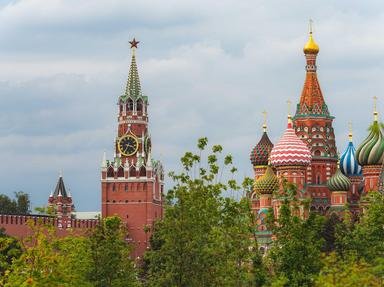Quiz Answer Key and Fun Facts
1. Stalin's Five Year Plans were based on central planning, and were strictly controlled by those at the top. Stalin and the Supreme Economic Council set the economic targets. Which man, who was the Commissar for Heavy Industry, was primarily in charge of meeting these targets?
2. Stalin's first Five Year Plan set absurdly ambitious economic targets. Which city, with a name meaning "Magnet Mountain", was the site of the rapid production of a huge steelworks during the first Five Year Plan?
3. The inefficiencies caused by the poor transport system during Stalin's first Five Year Plan did not go unnoticed. In order to move materials about more easily within the USSR, a new canal system was opened in 1933 as part of the second Five Year Plan. Which two seas did this canal link?
4. The third Five Year Plan lasted only 3 years (1938-1941). It again focussed on heavy industry to drive forward industrialisation. What was the *second* essential focus of this plan?
5. From 1932 to 1934, Stalin carried out a series of purges in order to root out opposition. However, this was done in a far less extreme fashion than in his Great Purges of the late 1930s. Seen as one of the last attempts to challenge Stalin, which man argued against forced collectivisation and the rate of industrialisation?
6. Stalin is infamous for his coldness and brutality. The suicide of his second wife in 1932 was said to make him even colder and more brutal. This was seen by many as a significant factor in the escalation of the purges. What was the name of this wife?
7. Sergei Kirov was the key figure in dismissing Stalin's desire to implement the death penalty on those who opposed and criticised him. Many therefore looked upon Kirov as a powerful player in the party. Some even encouraged him to take the position of party leader. What happened to Kirov in 1934, which ensured he would never rival Stalin?
8. Part of Stalin's Great Terror was the public interrogation and highly abusive haranguing of those accused of crimes before their execution. These were known as "show trials" and they intended to justify Stalin's extreme actions. Who was the main prosecutor in these "show trials"?
9. Stalin's first show trial took place in August 1936 and was significant in the sense that it was the first time that "old Bolsheviks" were killed in a purge. Which powerful political pair was amongst the 16 leftist Communists who were executed following this show trial?
10. Stalin's third show trial targeted those in the right of the party. Which rightist Bolshevik gave a spirited defence during his trial, and although pleading guilty, showed the trials to be ridiculous?
Source: Author
doublemm
This quiz was reviewed by FunTrivia editor
bloomsby before going online.
Any errors found in FunTrivia content are routinely corrected through our feedback system.

